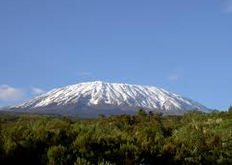Travellers with disabilities
A patient's disability may determine the type of holiday they may be planning. A risk assessment may need to take into account the patient's specific needs. Travel companies that specialise in holidays for patients with disabilities may be more prepared or more able to provide specialised equipment that is necessary for specific groups of patients.
Travellers to high altitude
Trekking holidays to places such as Machu Pichu and Cusco (Peru), Killimanjaro (Tanzania) or Everest base camp (Nepal) may necessitate specific advice regarding altitude and how to minimise the risk of acute mountain sickness (AMS). Trekkers should be advised that they need to slowly acclimatise to the increasing altitude as they ascend each day.
 Travellers can be advised of the possibility of developing symptoms of mountain sickness simply by flying into airports at high altitude such as Cusco in Peru (3310m) or La Paz in Bolivia (4058m). Symptoms of altitude sickness may be experienced at altitudes above 2400m and include headaches, nausea, dizziness, sleep disturbance, and loss of appetite. Patients who experience these symptoms should not climb further and seek medical advice whilst they acclimatise.
Travellers can be advised of the possibility of developing symptoms of mountain sickness simply by flying into airports at high altitude such as Cusco in Peru (3310m) or La Paz in Bolivia (4058m). Symptoms of altitude sickness may be experienced at altitudes above 2400m and include headaches, nausea, dizziness, sleep disturbance, and loss of appetite. Patients who experience these symptoms should not climb further and seek medical advice whilst they acclimatise.
Patients may ask about the unlicensed use of acetazolamide for the prevention of AMS. Acetazolamide is used to prevent or reduce the symptoms of high-altitude disorders. Prompt descent will still be necessary in severe cases. The usual oral dose is 500mg to 1g daily in divided doses, preferably starting 24 to 48 hours before ascent and continuing for at least 48 hours while at high altitude as necessary to control symptoms.2
Allergies
A history of an allergic reaction to a vaccine or antimalarial drug is likely to contraindicate future use of these products. Patients at risk of anaphylaxis must ensure access to an adrenaline auto-injector whilst abroad. Those with food allergies should be extra-vigilant whilst abroad due to inadequate labelling or lack of information on ingredients.
